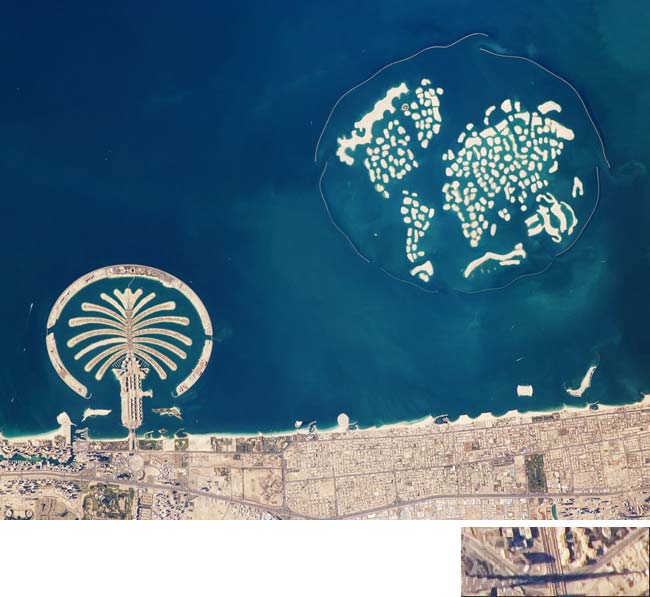What in the World?

While it might look like a microscopic image of a virus, a new photo by astronauts on the International Space Station shows the artificial archipelagos off the coast of Dubai in the United Arab Emirates.
The virus-looking object is called the World. The islands have been positioned to create — from above — the appearance of continents. A breakwater surrounding it all forms a rough outline of this sea-world.
Creation of the 300 World Islands in Persian Gulf started in 2003 and was finished in 2008, using 320 million cubic meters of sand and 37 million tonnes of rock for the surrounding 27-kilometer-long breakwater, according to NASA's Earth Observatory. Not much has happened since — little to no infrastructure is apparent in the image.
The other archipelago is known as Palm Jumeira, for its likeness to a palm tree. It is one of two Palm island complexes in Dubai.
Construction of Palm Jumeirah started in 2001, with more than 50 million cubic meters of dredged sand used to manufacture the islands. The islands were completed, in raw form, in 2006 and are now the infrastructure, homes and commercial builds are being developed.
Near the lower-right of the image is a needle-like shadow pointing to the right and just touching the right edge of the photo. That's the shadow of the Burj Khalifa, currently the world's tallest structure at 2,600 feet (800 meters) high. The inset is a larger version of the shadow and reveals the tapering building, as well.
Get the world’s most fascinating discoveries delivered straight to your inbox.



